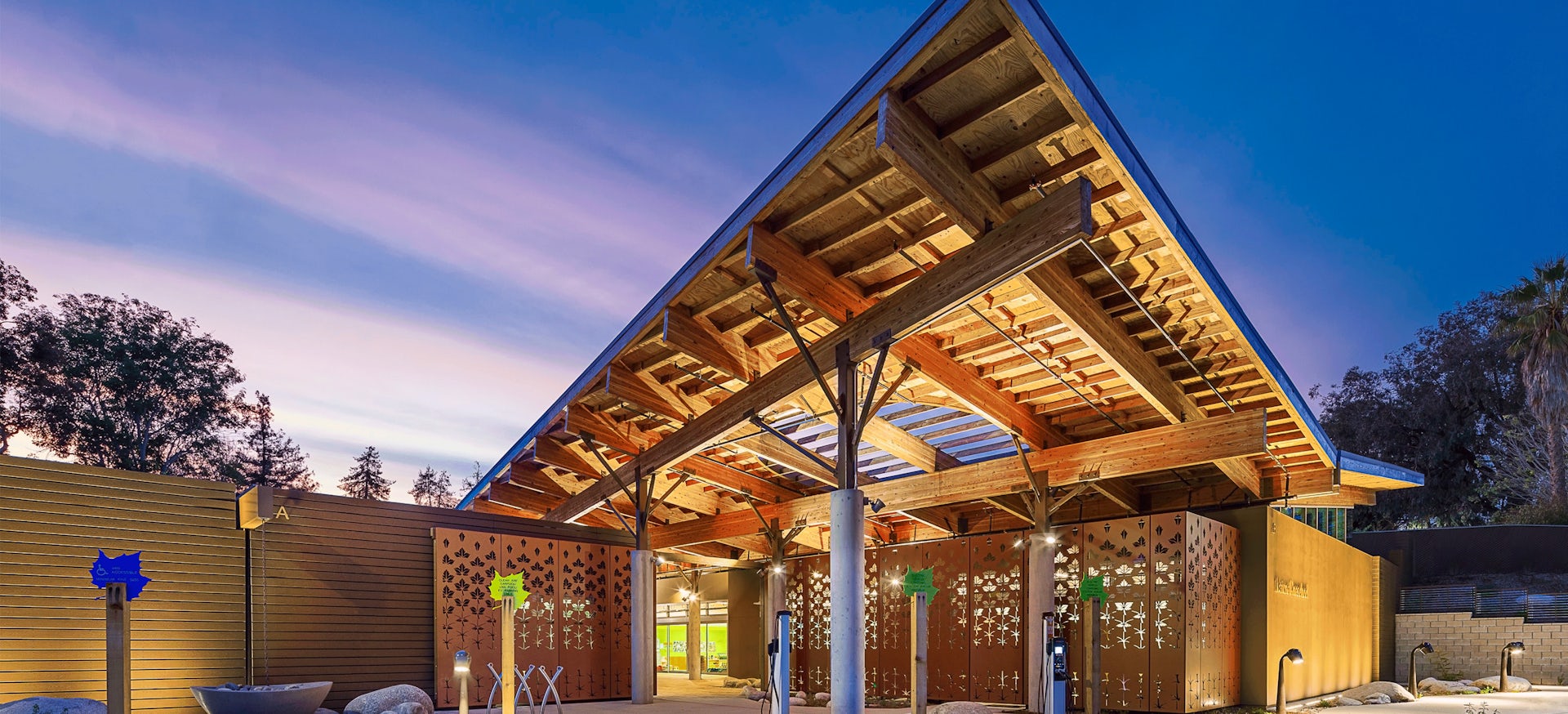By Martin C. Pedersen
Sustainable design in the U.S. is for many a sort of Rorschach test. The construction industry is either making steady progress toward the ultimate goal of a carbon-free building sector, or it’s moving entirely too slowly, missing key targets as the ecological clock keeps ticking. The perplexing truth to all of this is: both are ostensibly true. In recent decades the industry has become significantly more energy efficient. We’ve added building stock but flattened the energy curve. The cost of renewables continues to drop. But way more is required, much more quickly. At the same time, huge hurdles remain. Without a renewable grid and stringent energy codes, it’s hard to see how we can fully decarbonize the building sector in even 20 years, let alone at the timeline suggested by increasingly worried climate scientists. It’s the classic good news/bad news scenario (or vica-versa, depending on your mood).
In 2009, the AIA launched the 2030 Commitment, a voluntary program, created in collaboration with Architecture 2030, that lays out a series of energy reduction benchmarks aimed at creating a carbon-neutral building sector by the year 2030. To date, 822 firms have signed onto the pledge. That’s the good news. But, of those 311 reporting energy use, just 27 firms met the 70% energy-reduction benchmark set forth by the commitment (a note: that number might be somewhat higher, because renewables weren’t included in the reporting); for firms larger than 100, only two firms, Mithun and LPA, meet that goal. Recently I reached out to Dan Heinfeld, longtime president of LPA, to ask him how his firm did it, and why the rest of the industry, despite a lot of good intentions, is lagging behind.
MCP: Martin C. Pedersen
DH: Dan Heinfeld
MCP: Of the 311 firms reporting energy figures for their projects, fewer than 30 reached the AIA’s 2030 Commitment target last year, for reducing energy use in new buildings. Why the low number?
DH: The traditional model of an architecture firm designing a project and then bringing together a group of consultants and outside firms simply doesn’t work. Energy-reduction goals were one of the main reasons we decided to grow as an integrated firm. It’s the only way to make significant progress toward our net-zero goals. In the traditional world, the architect goes through, at best, schematic and conceptual, or even design development, before they bring in the consultant team. The project is already baked at that point. The consultant can’t have any real input in how the project should be designed. Before we integrated, we were constantly bumping into the restraints of the traditional framework. Consultants typically didn’t want to work on the project until the end, when the architects were done with their work, so they didn’t have to redraw. Getting them to participate freely in our concept of collaboration, earlier in the process, was difficult, if not impossible. We realized we didn’t want to simply hire consultants—we wanted partners.
MCP: Why is the industry unable to meet its climate targets, despite making it a top priority?
DH: The AIA only recently started to make it a priority. Recent initiatives by the AIA include the passing of the climate action initiative, the adoption of the Framework for Design Excellence and the creation of the Common App to measure sustainability across award programs. But the 2030 Commitment is totally voluntary. Firms can sign the commitment and feel good by signing and not report their findings, let alone meet the commitment for energy reductions. I’ve been told that when it was originally adopted, the 2030 Commitment was aspirational, and for many it still is. But “aspirational” is not getting it done.
Two changes to the 2030 Commitment would speed progress. First, the commitment should give project teams credit for including a future renewable source in plans once they achieve a 70% energy efficiency on the project. The commitment needs to address that carbon neutrality can’t happen without renewable energy being a part of the equation. Renewable-energy components should be either part of the project budget now or in the future. Teams should create renewable plans that have infrastructure included in the project.
Energy reduction beyond 70–75% is not realistic with conservation measures alone. In 2020, the commitment increases to an 80% energy reduction, and we probably won’t meet that goal unless clients are willing to add a renewable component. But we’re future-proofing our buildings with infrastructure that allows PVs to be added. The intent is that building owners can add the renewables when their budget allows, as systems become cheaper, and new incentives make the addition of the renewable have a more attractive payback.
Second, the AIA needs to show that 2030 is a priority by making a 70% efficiency on a project a requirement for all design award programs at AIA national, state, and local components.














